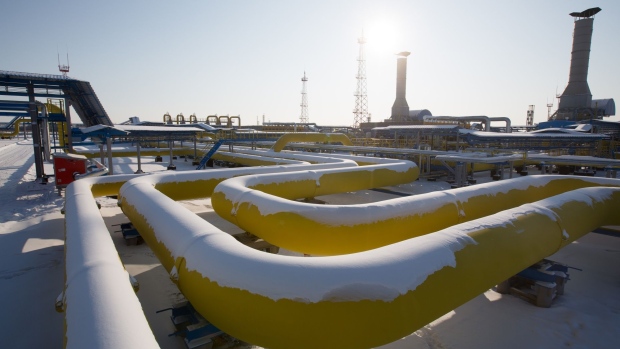Mar 15, 2021
Where Climate Scientists See Danger, Russia Sees an Opportunity
, Bloomberg News

(Bloomberg) --
Russia, the world’s fourth-biggest emitter of greenhouse gases, is bearing witness to one of the most obvious effects of climate change: rapidly rising temperatures in the Arctic.
The region is warming more than twice as fast as the rest of the world, altering weather patterns as far south as Texas. Home to more than a fifth of the planet’s forests, Russia has suffered two consecutive years of record-breaking wildfires that released emissions equivalent to those of a mid-sized country such as Spain.
Permafrost, the frozen ground that covers about half of Russian land, is thawing fast, damaging infrastructure, houses and industrial installations at a cost of up to $2.3 billion a year. The Siberian tundra stores an estimated 1,700 gigatons of planet-warming carbon dioxide, twice the amount currently in the atmosphere. Much of it could be released as the ground unfreezes.
But Russia is also home to the world’s largest reserves of liquified natural gas, and melting ice in the Arctic means it can ship more of its most valuable export to other countries. It could also potentially increase oil production. Warnings from climate experts that both activities could accelerate global warming haven’t deterred Russia’s leaders.
Read More: Russia’s Getting Left Behind in the Global Dash for Clean Energy
“Moving north and east is a job Russia has been doing for four and a half centuries —we know weather and nature are challenging up there” Aleksey Chekunkov, Russia’s minister in charge of developing the Arctic, said in an interview. “We will be living, working and developing our north in all scenarios.”
LNG burns cleaner than coal or oil, though it still releases emissions. Russia is betting that demand will rise over the coming decades as more countries move to replace coal in order to lower their carbon footprints.
The Northern Sea Route, which links northern Europe and Russia to China through the Arctic seas, used to be blocked by ice most of the year, with navigation only possible in summer months, from June to October. This year, record-low sea ice and an increasingly powerful Russian fleet of icebreakers meant the season was the longest ever, from May to February.
“We believe navigation can be made year-round and we’re not waiting until it happens climate-wise,” Chekunkov said. “We’re building the most powerful fleet of nuclear icebreakers in the world.” All-year navigation could be a reality by mid-century, he said.
By then, the world will be a much different place if humans haven’t drastically cut emissions. Much of the Earth’s ice will have melted, sea levels will have risen, and coral reefs and forests will have shrunk significantly. The planet will be hotter and more humid, leading to more extreme weather events such as hurricanes and wildfires.
Moscow is aware of the dangers. Chekunkov’s ministry has a team of 68 scientists and developed a digital model of the Arctic economy and ecology with about 10,000 different parameters, 800 of which can be tweaked to simulate different scenarios.
Yet the country is not doing enough to slow global warming. Russia’s climate plan is rated “critically insufficient” by the nonprofit Climate Action Tracker. If all countries followed its approach, global temperature rise from pre-industrial times would exceed 4ºC by the end of the century—the worst-case scenario outlined by scientists.
“We need to be realistic about the size of the country,” Chekunkov said. “Building a grid for a land that has on average one person per square kilometer is not always economic." Solar power is not an option for Arctic regions where the sun doesn’t shine for more than half of the year, and where wind energy is not constant. “Unless we see a major breakthrough in the technology of batteries and on moving power from one place to another, I believe LNG is the best possible solution,” he said.
In the meantime, Russia will do its best to profit from the opportunities unveiled by the melting ice, even as it struggles to deal with the impacts of climate change in its own territory.
“The Arctic is warming faster than the continent—this has a very negative potential, but also a very positive one,” said Chekunkov.
Laura Millan writes the Climate Report newsletter about the impact of global warming.
©2021 Bloomberg L.P.


